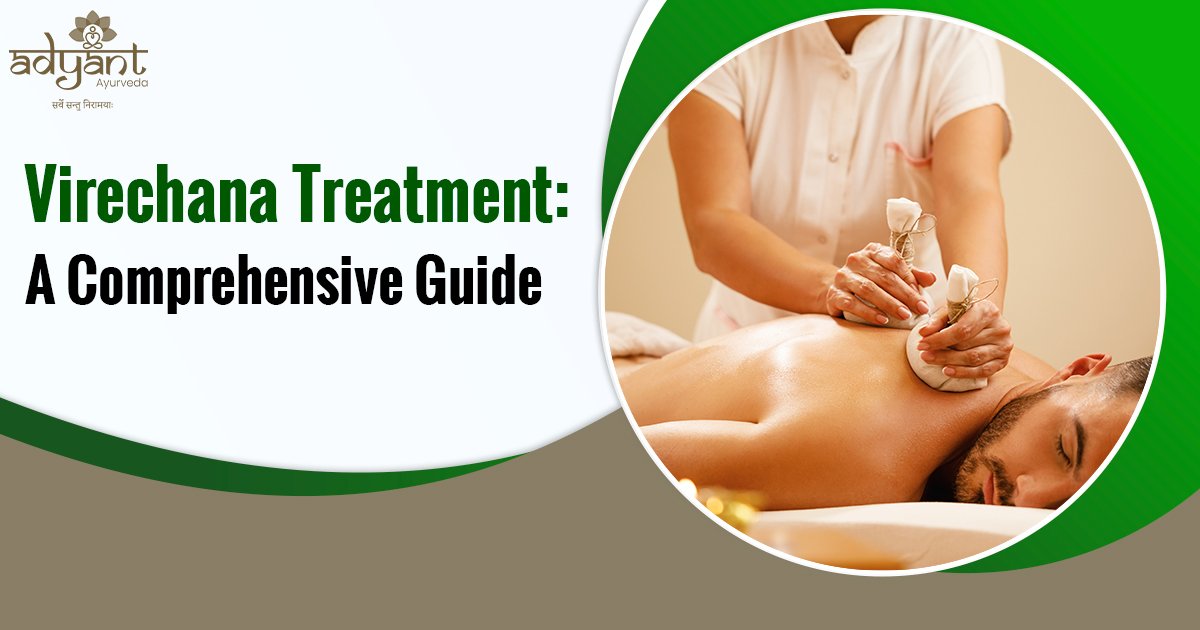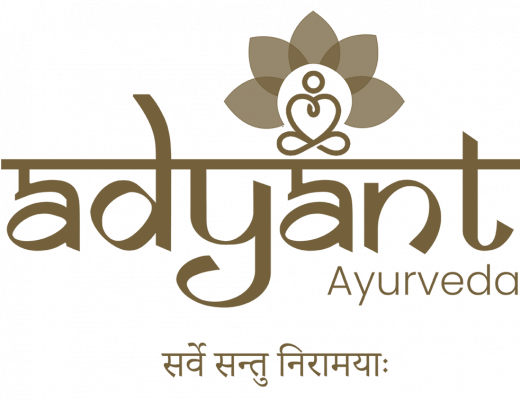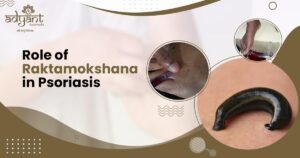Table of Contents
Toggle
Virechana Treatment (Purgation Therapy): It is a part of Panchakarma treatment. In Virechana patients goes under the controlled therapeutic purging for a specific time. The main purpose of this treatment is to remove imbalanced or excess pitta dosha.
Pitta Dosha is responsible for digestion and metabolism. when it got imbalanced it can lead to issues like digestion issue, Diabetes Mellitus, Hypertension, Increased Cholesterol, etc.
Virechana treatment is an outstanding gift given by Ayurveda to humanity. The word Virechana comes from two words VI + RECHANA means Vishitha rechana ( Unique Purgation process).
For free consultation with top ayurvedic doctors, download our app from Play Store “AyurCare“
What is Virechana Treatment?
Virechana treatment is one of the Panchakarma treatments where a patient is made to undergo controlled therapeutic purgation for a specified amount of time. “According to Ayurveda, Virechana treatment is targeted to expel the increased or vitiated pitta dosha from the body.”
Pitta dosha is responsible for all the digestive system functions, and metabolism in the body when it is in a balanced state. If pitta dosha goes out of control, it causes digestive tract disorders, skin diseases, liver and spleen diseases, etc. Medicines can be given to get the increased pitta to its normal levels if the vitiation is mild. But,if vitiation is severe then the increased pitta has to be expelled out of the body. It is here that the process of Virechana comes in handy.
Who can take Virechana Treatment?
After learning about what Virechana Treatment is, It is necessary to know for whom this treatment needs to be taken. Those who are suffering from the following problems can take this treatment:
-
- Obesity or overweight issue
- Digestive tract issues like increased acidity problems, GERD, Chronic bloating, sluggish digestion, etc
- Non-healing wounds, Ulcers
- Abscess, blisters
- Diseases of the Liver and Spleen
- PCOS and infertility
- Skin diseases like Psoriasis, Urticaria, Acne, etc
- Metabolic diseases like Increased Cholesterol, Diabetes Mellitus, Hypertension, etc.
People who want to maintain optimal health are also eligible for the Virechana Procedure.
You May Also Like: Ayurvedic Treatment for Gut Health
Virechana Procedure
In Virechana Treatment mainly 3 steps are involved in this process. They are
-
- Poorva karma (Preliminary process)
- Pradhana Karma(Main step or main treatment procedure)
- Pashchat Karma (After treatment protocol)
Let’s delve into each of these stages:
Poorva Karma (Preliminary process):
The preparation phase is crucial for the success of Virechana. It typically lasts for 3-7 days and involves the following steps:
- Pachana: This involves the administration of digestive herbs to enhance the body’s digestive fire (Agni) and prepare it for the main procedure.
- Snehana: Also known as Oleation, this step involves both internal and external application of medicated oils or ghee. Internal Oleation (Abhyantara Snehana) is done by consuming increasing amounts of medicated ghee or oil for 3-7 days. External oleation (Bahya Snehana) involves full-body oil massages.
- Swedana: This is a sudation or sweating therapy that follows oleation. It helps to open up the channels of the body and soften the accumulated toxins, making them easier to eliminate.
Pradhana Karma (Main Procedure):
The main Virechana procedure typically takes place on a single day and involves the following steps:
- Fasting: The patient is asked to fast from the previous night to prepare the body for the purgation process.
- Administration of purgatives: Early in the morning, the Ayurvedic practitioner administers carefully selected purgative herbs or medicines. These may include Trivrit (Operculina turpethum), Aragvadha (Cassia fistula), or Haritaki (Terminalia chebula), among others. The choice and dosage depend on the individual’s constitution and condition.
- Purgation: The purgative medicines induce controlled bowel movements, which can last for several hours. During this time, the patient is closely monitored by the practitioner.
Paschat Karma (Post-Treatment Care):
After the main procedure, proper post-treatment care is essential for recovery and to maximize the benefits of Virechana. This phase typically lasts for 3-7 days and includes:
- Samsarjana Krama: This is a specialized diet regimen that gradually reintroduces normal food. It usually starts with simple, easily digestible foods like rice gruel and progresses to more complex meals over several days.
- Lifestyle modifications: The patient is advised to follow specific lifestyle guidelines, including rest, avoiding strenuous activities, and maintaining a calm mental state. A specific Diet regimen should be followed to sustain the benefits of the Virechana Procedure. A diet that is light and easy to digest should be followed. To begin with, it should be a liquid diet, and then semi-solid and gradually solid foods are introduced.
Virechana Treatment Benefits
The benefits of Virechana Treatment are listed below:
-
- Corrects the metabolism
- Expels the toxins off the system
- Puts a proper foundation for the next set of treatments, both internal and external medications.
- Strength and immunity is enhanced
- Helps in the proper nourishment of the cells, tissues, and organs.
- Increases the longevity of the person
- Slows down the process of aging.
- Helps to maintain the optimal health of the individual.
- Virechana Procedure helps to maintain good health and gives good relief to many diseases if it is done by the best ayurveda treatment centre.
Conditions Treated by Virechana Treatment
Virechana is recommended for a variety of health conditions, particularly those associated with excess Pitta dosha. Some of these include:
- Digestive disorders: Acid reflux, gastritis, irritable bowel syndrome
- Skin diseases: Psoriasis, eczema, acne, urticaria
- Liver and gallbladder issues: Hepatitis, jaundice, gallstones.
- Metabolic disorders: Diabetes, hyperlipidemia
- Neurological conditions: Migraine, certain types of headaches
- Joint disorders: Gout, arthritis
- Gynecological issues: Menstrual disorders, PCOS
Precautions and Considerations
While Virechana Treatment can be highly beneficial, it’s not suitable for everyone. It should only be performed under the guidance of a qualified Ayurvedic practitioner. The following individuals should avoid Virechana:
- Pregnant and breastfeeding women
- Children under 12 years of age
- Elderly individuals with weak constitutions
- People with severe debilitating conditions
- Those with bleeding disorders or ulcerative colitis
- Individuals with severe anemia or emaciation
Modern Relevance of Virechana Treatment
In today’s world of processed foods, environmental toxins, and high-stress lifestyles, the concept of Ayurvedic detoxification has gained significant popularity. Virechana Treatment offers a time-tested, holistic approach to cleansing the body and mind.
While modern medicine has advanced tremendously, it often focuses on treating symptoms rather than addressing the root cause of illnesses. Virechana, on the other hand, aims to correct imbalances at their source, potentially preventing future health issues.
Moreover, as people become more interested in natural and traditional healing methods, practices like Virechana are gaining renewed attention. Many integrative health centers now offer Ayurvedic treatments, including Virechana treatment, as part of their wellness programs.
What is Panchakarma Treatment?
Panchakarma Treatment is derived from Sanskrit, which has two words Pancha and ‘karma which means Five sets of treatments or therapies or procedures. These are the treatments described in Ayurveda classics which are highest-order treatments aimed at balancing the vitiated Doshas, getting toxins out of the body, and maintaining the normal functioning of the systems.
The duration of Panchakarma treatment differs from person to person, it is disease-specific and depends on the age and strength of the person. When done in a good Ayurveda treatment center, Panchakarma treatment gives very good relief to people. Here will discuss Virechana treatment in detail
Panchakarma’s five conventional treatments are as follows:
-
- Vamana (Therapeutic emisis)
- Virechana (Therapeutic purgation)
- Anuvasana Basti(Enema with oil or Ghee or both)
- Aasthapana Basti(Kashaya Basti or herbal decoction enema)
- Nasya (Nasal irrigation or putting medicines through the nose)
Some other schools of thought consider Rakta Mokshana as one of the Panchakarma treatments. Sodhana or purification is the main purpose of panchakarma treatments. According to Charaka Samhita, Ayurveda’s earliest literature, if diseases are cured with sadhana, then it does not return. As a result, Panchakarma is the ultimate method for healing and restoration the bodily functions.
Panchakarma Advantages
Toxins are removed from the entire system and there by doing this it offers the following benefits.
-
- Balances vitiated Doshas
- The digestive system gets repaired
- Boosts the immune system.
- Reduces stress levels.
- It increases the longevity of an individual.
- Weight loss (if overweight)
- It corrects the metabolism and thereby reduces the chances of getting Metabolic disorders or if present, helps in treating the metabolic disorders.
Seven Signs You Should Detox:
-
- On the tongue, there is a thick layer of covering.
- Tired throughout the day, particularly after meals
- Aches and pains in the body
- Uncontrollable cravings for food.
- Mind fogging and lack of attentiveness.
- Bad odor, bad breath, and farts
- Sleep disturbances.
- Menstrual irregularities.
Scientific Base of Virechana treatment and Scientific effects on the body
Virechana process in based on Ayurvedic principles that to remove excess Pitta Dosha from the body. Modern science and research on Virechana treatment helps to treat various diseases and health issues. Will discuss Scientic view about Virechana treatment.
1) Detoxification and Elimination of toxins.
a) Gut Health improvisation: Snehapanam ( Ghee intake ) procedure involved in Virechana helps to make internal oleation of the gastrointestinal tract and remove water-soluble and fat-soluble toxins from the body. On the last day through the purgation process, it helps to flush out all the toxins of the body. This treatment helps to improve gut health and promote better digestion by reducing the load on the liver as well as helping to promote healthy weight loss.
b) Liver function enhancement: The liver vital organ for detoxification, is directly influenced by Virechana treatment. The purgation process helps in reducing load on the liver by eliminating bile and other metabolic waste products. This leads to improvement in live functions, better bile secretion, and enhanced metabolism, aligning with the goal of balance of Pitta dosha which is the main targeted job of Virechana treatment.
Read more about Ayurvedic Treatment for Fatty Liver
2) Regulation of Metabolic Processes :
a) Impace on Digestive Enzymes: Post Virechana treatment, it reduces the excess load of the liver and regulates digestive enzymes and gastric juices. It helps to improve gut health and overall well-being. It helps to lead gut improvement in gut function towards absorption of better nutrient absorption and balanced microbiome, and it results in improved metabolic rate.
b) Reduce inflammation: Chronic inflammation is key to multiple metabolic disorders. The herbs used in the Virechana process like Haritaki, and Trivrith Leham Possess anti-inflammatory properties. By reducing inflammation Virechana treatment helps to treat health conditions like IBS, Gastric issues or other inflammatory gut disorders.
Also learn more about Top Ayurvedic Herbs That Boost Metabolism
3) Hormonal Balance and Stress reductions:
a) Cortisol Balance: The imbalance of cortisol hormones is base caused for stress. It was found that Virechana treatment helps to balance cortisol levels in the body and it indirectly impacts our stress levels. High cortisol levels are caused by digestive disorders, Obesity, stress, and Metabolic issues. Virechana helps by reducing Cortisol levels.
b) Insulin sensitivity: Virechana treatment helps to treat health conditions and Diabetes-2, The Snehapanam process involved in Virechana treatment helps to dissolve Visceral fat improve Insulin sensitivity, and improve glucose metabolism.
4) Immnunomodulataion :
a) Immune system improvement: Virechana treatment removes Ama ( Toxins ) and balances Dosh’s of the body which leads towards strengthening of the body’s defense system which is supported by the Ayurvedic concept i.e OJAS, which is the essence if vitality and Immunity.
b) Gut-Immune Axis: The gut plays a vital role in immune functions and Virechana treatment helps to cleanse Gut and improve its functions. If your Gut health is good means your immunity is good. So Keep your Gut healthy with Virechana and start your journey towards improved immunity.
Potential risks and Side effects of Virechana treatment
We discussed about health benefits of Virechana treatment, it’s also important to discuss risk factors to get complete transparency about the treatment. As it is having a lot of health benefits it is important to discuss risk management as well.
1) Dehydration and electrolyte imbalance: The Purgation process leads towards high fluid loss and sometimes it results in dehydration and imbalance of electrolytes if not managed properly.
2) Gastrointestinal issues: Some patients may feel gastric issues during or post-Virechana treatment as well as discomfort which includes cramps, nausea, and diarrhea.
3) Fatigue and weakness: Some patient who is already weak may face physically draining or temporary fatigue.
Management: Sufficient rest and a carefully followed post-treatment diet will get improvement in conditions.
4) Adverse reaction in certain conditions: Virechana treatment may exacerbate some conditions like peptic ulcers, anemia, or IBD like Crohn’s disease.
Management: Adyant Ayurveda prefers to conduct a consultation before planning Virechana treatment to understand Prakruthi and Vikruthi. Based on the same we plan treatment and take required precautions.
Virechana Treatment at Adyant Ayurveda Bangalore
Adyant Ayurveda is an Excellence in Panchakarma treatment award winner by Times Health. Experience the best of Ayurvedic detox with Virechana therapy with Adyant Ayurveda. This treatment cleanses toxins, balances doshas, and effectively manages conditions like skin disorders, digestive issues, and lifestyle diseases.
Why Choose Adyant Ayurveda for Virechana Treatment in Bangalore?
- Expert Doctors: Led by Dr. Shree Lakshmi, our medical director with more than 28 years of experience
- Strategic Locations: Jayanagar, Indiranagar, Kalyan Nagar, and Rajarajeshwari Nagar.
- Tailored Treatments: Customized therapies based on your unique body constitution.
- Premium Facilities: Hygienic and relaxing environment.
Call 9972541009 to book your appointment and begin your wellness journey today!
Virechana Treatment: Conclusion.
Virechana Treatment is a powerful Ayurvedic purification technique that has stood the test of time. By removing excess Pitta and associated toxins from the body, it aims to restore balance and promote overall health. The process involves careful preparation, controlled purgation, and diligent post-treatment care. Most people ask questions about Virechana treatment cost. The cost depends on several things like a number of days, medicines used for treatment, purpose of treatment, etc. At Adyant Ayurveda we charge between 10500 to 14000 for Panchakarma virechana. After a detailed consultation will let you know about the cost of the Panchakarma Virechana treatment.
While the benefits of Virechana Treatment are numerous, it’s crucial to approach this treatment with respect for its potency and potential risks. Always consult with a qualified Ayurvedic practitioner before undergoing Virechana or any other Panchakarma procedure.
In our quest for holistic health and well-being, ancient practices like Virechana offer valuable insights and techniques. By combining the wisdom of traditional Ayurveda with modern medical knowledge, we can work towards a more comprehensive approach to health and healing.
Your body deserves a true reset.
Let our award-winning team guide you through a safe and effective Panchakarma Virechana Therapy.
📍Available at Jayanagar, Indiranagar, Kalyan Nagar, Rajarajeshwari Nagar & Bannerghatta Road.
📞 Call 99725 41009 to book your session.
Reviewed and Written by
Dr. Shree Lakshmi, BAMS, MD (Ayurveda)
Medical Director, Adyant Ayurveda, Bangalore
Dr. Shree Lakshmi is one of the best Ayurvedic doctors in Bangalore, with more than 28 years of experience in Panchakarma and classical Ayurvedic treatments. As the Medical Director of Adyant Ayurveda, she has guided thousands of patients in managing digestive disorders, skin diseases, metabolic imbalances, and women’s health conditions through personalized Ayurvedic therapies.
This article on Virechana Treatment (Purgation Therapy) has been medically reviewed by Dr. Lakshmi to ensure accuracy, authenticity, and alignment with traditional Ayurvedic principles.
Read Other Blogs:
FAQs Related to Virechana Treatment
Which month is best for Virechana?
Some people recommend taking Virechana therapy during the spring season, which falls between mid-February and mid-April. During this season, the atmospheric temperature is mild, and the digestive capacity of the body improves. Monsoon is also the best time to undergo virechana, at that time digestive fire will be very. So with the help of Virechana, we have improved the same. But nowadays its always better to undergo Virechana treatment according to your requirements and suitable time. Consult a senior Ayurveda doctor to plan your Panchakarma Virechana treatment.
Can Virechana be done at home?
Virechana is an Ayurvedic therapy that involves the use of herbal laxatives to eliminate toxins and waste from the body. While it is possible to do Virechana at home, it is crucial to seek guidance from an Ayurvedic practitioner to ensure that the therapy is carried out safely and effectively. Virechana can have side effects like nausea, vomiting, and diarrhea, and it is vital to be aware of the right dosage and timing to avoid any complications. A practitioner can guide you through the pre and post-treatment procedures and offer suitable diet recommendations to achieve the best results.
How many days do you need for Virechana?
Virechana is a specialized process that involves performing a powerful detoxification of the body. Based on your digestive system the Ayurveda doctor will decide the number of days. It may be from 12 days to 18 days. In Virechana first AMA should be corrected with proper deepen Pachana. If it’s done properly we can good results during Snehapanam.
What are the disadvantages of Virechana?
Virechana can cause some side effects, such as nausea, vomiting, diarrhea, dehydration, and electrolyte imbalances. These side effects can be more severe in people with pre-existing medical conditions or those who are not properly prepared for the therapy. There is also chance of severe dehydration Virechana is not suitable for everyone, particularly people with certain medical conditions or those who are pregnant or breastfeeding. So always recommended to consult a senior Ayurveda doctor.
How much weight lost after Virechana?
The weight loss that may occur after Virechana is mostly due to the elimination of excess water, fecal matter, and toxins from the body, rather than fat loss. The amount of weight lost can vary from person to person. The person can lose weight from 3 to 6kg after Virechana treatment.
What to eat during Virechana?
- Stick to a simple, easy-to-digest diet of whole, unprocessed foods. This can include cooked vegetables, grains like rice and quinoa, and soups.
- Avoid heavy, fried, or spicy foods, as well as processed or packaged foods, sugar, and caffeine.
- Drink plenty of warm, purified water, as well as herbal teas like ginger, chamomile, or fennel.
- Depending on the individual’s Ayurvedic dosha, specific herbs or spices may be recommended to support digestion and the elimination of toxins. For example, ginger, cumin, and coriander can be beneficial for balancing Pitta dosha.
- It is also recommended to avoid eating anything for at least a few hours before and after taking the herbal laxatives used in Virechana.
Which organs does Virechana eliminate toxins from?
According to Ayurvedic principles, Virechana primarily eliminates toxins from the digestive system and the liver, which are considered to be the primary sites of toxic buildup in the body. Virechana work by stimulating the colon to expel fecal matter and other waste products, which can help to eliminate toxins that have accumulated in the intestines.
How do you feel after Virechana?
The experience of Virechana, an Ayurvedic therapy that involves the use of herbal laxatives to eliminate toxins from the body, can vary depending on the individual and the specifics of the therapy. However, here are some common experiences that people may have after undergoing Virechana:
- Lightness and clarity: Many people report feeling lighter and clearer after Virechana, both physically and mentally. This is likely due to the elimination of toxins and the restoration of balance to the body.
- Hunger and thirst: Since Virechana involves fasting and the elimination of fluids, it is common to feel hungry and thirsty after the therapy. It is important to drink plenty of fluids and eat simple, nourishing foods to support the body’s recovery.
- Fatigue: Virechana can be a draining experience, both physically and emotionally. Some people may feel fatigued or lethargic after the therapy and may need to rest and recover.
- Improved digestion: Virechana can help to improve digestion and relieve symptoms like bloating, gas, and constipation. Many people report feeling better able to digest food and absorb nutrients after the therapy.
- Sense of calm and relaxation: Virechana can help to balance the nervous system and promote a sense of calm and relaxation. This can be especially beneficial for people who experience anxiety or stress.
How long is the Virechana treatment?
- Pre-treatment preparation: Depending on the individual’s health status and Ayurvedic dosha, a preparatory phase of several days or weeks may be recommended before starting Virechana. This can involve dietary changes, herbal supplements, and other therapies to support the body’s elimination of toxins.
- Actual Virechana treatment: The actual Virechana treatment typically lasts for a single day, during which the person takes herbal laxatives and undergoes various therapies to support the elimination of toxins. This may involve multiple doses of the laxatives and a period of fasting to allow the body to expel waste products.
- Post-treatment recovery: After the Virechana treatment, a period of rest and recovery is typically recommended to allow the body to fully eliminate toxins and restore balance. This can involve dietary changes, herbal supplements, and other therapies to support the body’s recovery.
Overall, the duration of Virechana can range from a few days to several weeks, depending on the individual’s needs and the specifics of the therapy. It is important to work with a qualified Ayurvedic practitioner to determine the appropriate duration of Virechana and to ensure that the therapy is safe and appropriate for you.
Does Virechana cause weight loss?
Weight loss may be a side effect of this procedure, it is not the primary goal of Virechana. Virechana is primarily used to treat digestive disorders, skin problems, and other health issues related to an accumulation of toxins in the body. Weight loss may occur as a side effect of Virechana because the elimination of toxins can improve digestion and metabolism, leading to better absorption of nutrients and more efficient burning of calories. However, the amount of weight loss that occurs will depend on various factors such as the individual’s diet, lifestyle, and overall health.
Which ghee is used for Virechana?
In Ayurvedic medicine, clarified butter or ghee is used for various purposes including Virechana. The type of ghee used for Virechana may vary depending on the individual’s specific needs and the practitioner’s recommendation. Ghee used for Virechana should be of high quality and prepared using traditional Ayurvedic methods to ensure its purity and effectiveness.
What are the 4 types of Virechana?
Virechana is a type of Panchakarma therapy that is used for detoxification and purification of the body. There are four main types of Virechana, which are as follows:
- Nitya Virechana: This is a daily routine of consuming mild laxatives or herbs to promote regular bowel movements and detoxification of the body. It is recommended for people who have a sedentary lifestyle and tend to suffer from constipation.
- Nitya-Vishesh Virechana: This is similar to Nitya Virechana, but the herbs used are stronger and have a more powerful effect on the body. This type of Virechana is recommended for people who have a more active lifestyle and need a stronger detoxification.
- Krama Virechana: This involves the gradual administration of increasing doses of laxative herbs over a period of several days. It is recommended for people who have a strong Pitta Dosha and are prone to inflammatory conditions.
- Langhana Virechana: This involves fasting and the use of strong purgatives to eliminate toxins from the body. It is recommended for people who have a strong Kapha Dosha and are prone to conditions such as obesity and diabetes.
Disclaimer
This content is for informational purposes only and does not replace professional medical advice. Ayurvedic treatments, including Virechana and Panchakarma, should be taken only under the guidance of a qualified Ayurvedic doctor. Results may vary based on individual health conditions.






